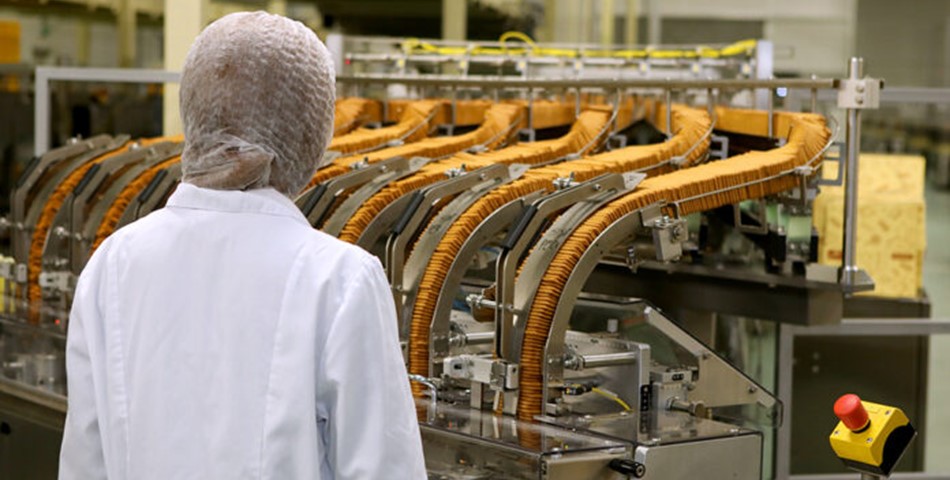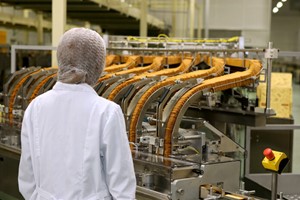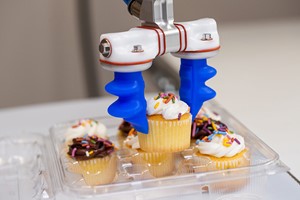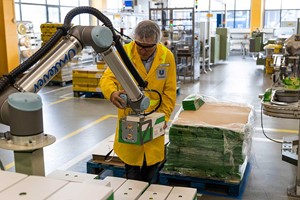Automation has entered and streamlined almost every corner of our economy, and food processing is no different. However, the food and beverage industry still lingers behind other industries that have fully embraced the potential for automation and robotics to transform and alleviate processing challenges.
Research shows that for the past five years, the food and beverage industry’s investment in automation falls behind other industries, such as logistics and fulfillment, automotive and healthcare, and pharmaceuticals. In addition to external factors such as inflation, skilled worker shortages, and supply chain disruptions, organizations struggle with internal challenges, such as balancing quality and growth, worker retention, using and understanding data, and integrating new technology. The use of automation and robotics helps solve these internal and external challenges.
Factors such as inflation, labor shortages, sustainability requirements, and the desire to improve quality and output all support the argument for increased automation in food processing. Increases in inflation have created rising input costs in food processing, such as increasing the price of labor, materials, and energy. Not only the price of labor, but the lack of labor within the food processing industry remains a concern with approximately 627,000 unfilled manufacturing positions across the United States. The current and projected impact of labor shortages casts a shadow over manufacturing and presents productivity challenges for the near future.
Consumers are showing an increased appetite for sustainably sourced and produced products, which may impact manufacturing operations. Latest reports indicate that 42% of consumers factor in sustainability when making purchasing decisions, an 18-point percentage increase from last year, and 54% of those consumers believe food manufacturers play the biggest role in providing sustainable products. In addition to consumer interests, regulatory factors are increasingly encouraging increased sustainability in food manufacturing, which has the potential to disrupt processes and compliance in the industry.
While external concerns remain a factor, food manufacturers are also citing internal priorities such as quality improvement and profitable growth as major foundational keys to success in the industry. Organizations are beginning to realize the potential of automation and robotics to significantly impact production by increasing productivity, improving quality, and decreasing costs. In fact, reports indicate that out of all the technology investment over the past year, 33% of businesses found that process automation had the biggest return on investment.
Manufacturers who fail to navigate these compounding challenges will fall behind competitors who are leveraging automation and robotics to fill operational gaps spawned by these internal and external obstacles. Not only can automation and robotics improve efficiency and reduce errors, but they can help offset tight margins, supplement labor shortages, help meet demands and regulations, and provide more control over operations.
How to optimize automation and robotics
Successful implementation and use of robotics and automation across an enterprise requires thoughtful management and monitoring to control and extract insights. To extract the greatest insights out of robotics and automation, businesses should ensure that the software powering these technologies connects across the enterprise systems to improve insights and information gathering. Specifically, automation software can provide improved data visibility and analysis into the production process and identify problems. An interconnected ecosystem provides insights across operations by centralizing machines, network, and data through the industrial internet of things (IIoT) and connected enterprise.
Essential components to gathering that information and successfully deploying it to improve automation across the organization include:
- Manufacturing Execution System (MES) tracks key performance indicators (KPIs) to provide real-time visibility into operations and prevent points of congestion.
- Quality Management System (QMS) provides a central repository for all data and enables traceability and automation of workflows.
- Supply Chain Planning (SCP) automates data collection from machines, sensors, and other systems to identify trends and patterns, automating production planning, workflows, and performance.
The use of automation and robotics can help alleviate the operational pressures placed upon food processing by economic, customer, and industry challenges. Investing in automation and robotics improves visibility in operations and increases precision and accuracy. As the food manufacturing industry faces labor challenges, increasing margins, and regulations, and seeks to streamline processes, automation serves as a viable solution to improve operations across the enterprise.
foodindustryexecutive.com - Jim Bresler












